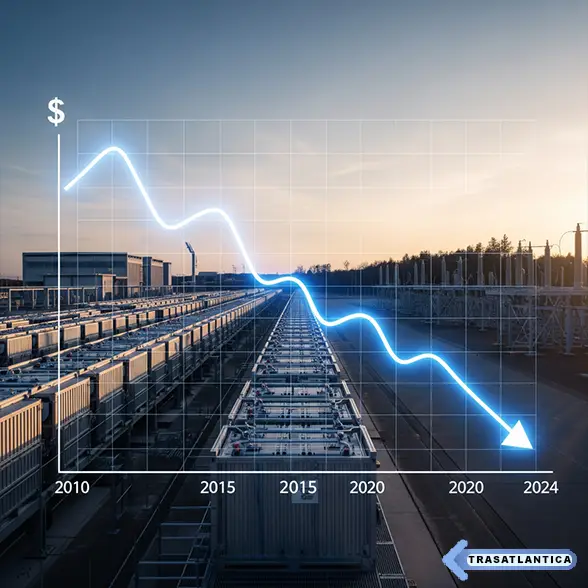Cost Trends have significantly influenced the adoption and development of energy storage technologies worldwide. As prices decrease, more industries and consumers gain access to reliable storage solutions. Innovations in materials and manufacturing processes contribute to reducing expenses. Moreover, policy support and economies of scale play important roles in making energy storage more affordable. Understanding these cost dynamics is crucial for stakeholders to plan investments and promote sustainable energy infrastructure.
Cost Trends Shaping the Future of Energy Storage Markets
Energy storage markets experience rapid changes driven by technological breakthroughs and competitive pricing. Declining costs enable broader integration of renewable energy, improving grid stability and flexibility. Manufacturers continuously optimize production methods to enhance efficiency and reduce waste. Additionally, emerging storage types present diverse options suited to different applications, such as residential, commercial, and utility scales. These developments create new opportunities for businesses and policymakers to support energy transition goals effectively.
Policy Influence on Cost Trends and Energy Storage Expansion
Government regulations and incentives strongly affect the cost landscape of energy storage deployment. Subsidies, tax credits, and grants encourage research and infrastructure investments. Meanwhile, standards and certification programs ensure quality and reliability, building consumer confidence. International collaborations facilitate knowledge sharing and harmonization of policies, accelerating adoption globally. As a result, coordinated efforts enhance market growth and address challenges related to affordability and accessibility.
Impact of Cost Trends on Energy Storage Technology Innovation
Falling costs stimulate innovation by enabling more extensive research and experimentation. Companies invest in advanced materials, such as solid state electrolytes and flow batteries, aiming to improve performance and lifespan. Manufacturing advances, including automation and digitalization, contribute to cost reductions and quality improvements. Furthermore, flexible financing models emerge to lower upfront expenses and increase adoption rates. Collectively, these factors drive a positive cycle of innovation and market expansion.
Strategic Considerations for Managing Cost Trends in Energy Storage
Stakeholders must carefully analyze cost trends to make informed decisions on technology selection and project development. Risk management involves balancing upfront investment with long term operational savings and environmental benefits. Collaboration between private and public sectors fosters sustainable growth and supports workforce development. Furthermore, adopting data driven approaches enhances forecasting accuracy and resource allocation. Ultimately, proactive strategies ensure cost effective deployment and maximize returns.
In summary, cost trends play a pivotal role in shaping the energy storage sector’s growth and technological progress. Continued innovation, supportive policies, and strategic planning will drive affordable and sustainable energy storage solutions worldwide.
